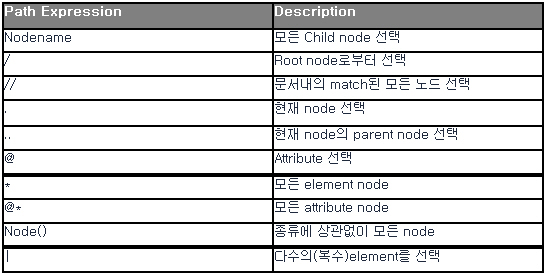읽어들일 XML 파일 'booklist.xml'
<?xml version="1.0" encoding="utf-8" ?>
<!DOCTYPE booklist SYSTEM "booklist.dtd">
<booklist>
<book id="b1" kind="컴퓨터">
<title>기초에서 실무까지 XML</title>
<author>신민철</author>
<publisher>프리렉</publisher>
<price>35000</price>
</book>
<book id="b2" kind="소설">
<title>사랑과 전쟁</title>
<author>이사랑</author>
<publisher>전쟁문화사</publisher>
<price>15000</price>
</book>
<book id="b3" kind="잡지">
<title>마이크로 소프트</title>
<author>빌 게이츠</author>
<publisher>마소문화사</publisher>
<price>20000</price>
</book>
<book id="b4" kind="소설">
<title>액션가면부인 바람났네</title>
<author>짱구</author>
<publisher>짱구출판사</publisher>
<price>12000</price>
</book>
</booklist>
Javascript에서 DOM을 이용해본 사람이라면 익숙할 getElementById() 메소드를 이용하는 동일한 사용법으로 이용할 수 있다.
ID를 이용해서 테그를 선택해야하는데. 단, HTML DOM은 이미 ID라는 attribute가 정의 되어 있지만 xml에서는 id attribute가 정해져 있는 것이 아니다.
따라서 위 xml파일과 같이 dtd 파일에서 attribute를 ID특성으로 정의 해줘야 한다.
참조하는 DTD 파일은 다음과 같다. 'booklist.dtd'
<?xml version="1.0" encoding="utf-8" ?>
<!ELEMENT booklist (book*)>
<!ELEMENT book (title,author,publisher,price)>
<!ELEMENT title (#PCDATA)>
<!ELEMENT author (#PCDATA)>
<!ELEMENT publisher (#PCDATA)>
<!ELEMENT price (#PCDATA)>
<!ATTLIST book
id ID #REQUIRED
kind CDATA #IMPLIED>
이를 이용한 C# 코드는 다음과 같다.
using System;
using System.Linq;
using System.Collections.Generic;
using System.Text;
using System.Xml;
namespace CH11
{
class p562_FindElementById
{
static void Main()
{
string filePath = @"..\..\booklist.xml";
XmlDocument xDoc = new XmlDocument();
xDoc.Load(filePath);
XmlElement element = xDoc.GetElementById("b2");
string title = element.FirstChild.FirstChild.Value;
Console.WriteLine(title);
}
}
}
ref. .NET 닷넷 개발자를 위한 XML p.562


